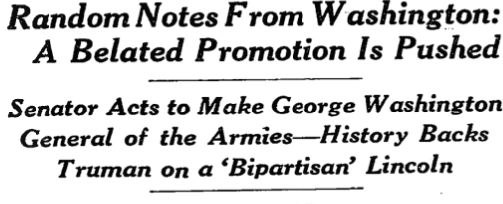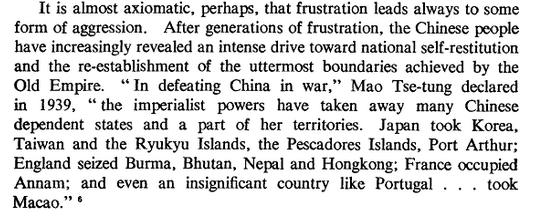Mao& #39;s & #39;five fingers & palm& #39; theory regarding Tibet & Nepal, Sikkim, Arunachal, Bhutan & Ladakh is popularly put forth as examples of CCP& #39;s territorial designs south of the Himalayas.
However, there is little evidence Mao said so. Thread with a dive into history follows:
However, there is little evidence Mao said so. Thread with a dive into history follows:
The first recorded evidence of the & #39;five fingers& #39; comes from Scottish missionary George Patterson in his 1957 book God& #39;s Fools (p. 235). Note that he doesn& #39;t attribute it to Mao; in fact, there is no source but attributed to a Communist communication:
In Islamist Shangrila, David G. Atwill quotes Patterson& #39;s 1965 report in Indian Quarterly:
However, Atwill demolishes Patterson& #39;s assertions. We have to also note Patterson was a romantic adventurer, & like most missionaries, believed in *God& #39;s* will. His Khampa raid filming caused severe trouble among the guerrillas.
Now, Nepali historian V.K. Manandhar also says CCP had territorial designs on Nepal. He provides 2 sources – TR Ghoble& #39;s text on Nepal-China relations, & a 10 May 1954 NYT report. Let& #39;s focus first on the NYT report:
The NYT report says & #39;maps from Peiping& #39; have shown Nepal to be in Chinese territory.
However, this is not a report as much as a story on whispers in Washington, much like Coomi Kapoor& #39;s Delhi Confidential that comes in Indian Express. No sources here either.
However, this is not a report as much as a story on whispers in Washington, much like Coomi Kapoor& #39;s Delhi Confidential that comes in Indian Express. No sources here either.
Let& #39;s move to Ghoble, whose text is a great primer, but also outdated now. Ghoble asserts (p. 39) Mao thought of Nepal as a dependent state. He sources it to 2 texts. [Note, beyond Patterson, no one has said & #39;five fingers& #39; policy]
Let& #39;s go over Ghoble& #39;s sources. The first is Stuart R. Schram& #39;s translations of Mao& #39;s thoughts. Relevant bits on Nepal screenshots attached from 1939.
Note, nowhere Mao says CCP will assert territorial designs on Nepal (no five fingers here). All he says is England & #39;took& #39; Nepal.
Note, nowhere Mao says CCP will assert territorial designs on Nepal (no five fingers here). All he says is England & #39;took& #39; Nepal.
Ghoble& #39;s second source is Robert C. North& #39;s 1960 journal article on Sino-Soviet alliance:
Again, no mention of five fingers, and repetition of Mao& #39;s 1939 thoughts of Qing territorial withering under imperialism (which does not, IMO, amount to Mao and & #39;five fingers& #39;)
Again, no mention of five fingers, and repetition of Mao& #39;s 1939 thoughts of Qing territorial withering under imperialism (which does not, IMO, amount to Mao and & #39;five fingers& #39;)
So where did the & #39;five fingers& #39; policy come from?
Patterson seems to be the only one saying this, but there is no other evidence for it. Patterson is also notorious for exaggeration & obfuscation, his Khampa raid being the most notorious one that created trouble.
Patterson seems to be the only one saying this, but there is no other evidence for it. Patterson is also notorious for exaggeration & obfuscation, his Khampa raid being the most notorious one that created trouble.
The five fingers theory is an example of how a fiction enters popular imagination & becomes truth. It suits our idea of an expansionist China, esp. during the PRC& #39;s early days.
This in no way excuses Mao& #39;s excesses, nor China& #39;s territorial claims, nor other issues.
End.
This in no way excuses Mao& #39;s excesses, nor China& #39;s territorial claims, nor other issues.
End.
Sources:
https://archive.org/details/politicalthought0000unse_k1v5/page/122/mode/2up
https://archive.org/details/p... href=" #page_scan_tab_contents">https://www.jstor.org/stable/763344?read-now=1&refreqid=excelsior%3A1bb3155d80fd7796c707c7cb75e8cd1a&seq=7 #page_scan_tab_contents
TR">https://www.jstor.org/stable/76... Ghoble, China-Nepal Relations & India
https://www.jstor.org/stable/j.ctv941r61">https://www.jstor.org/stable/j....
https://archive.org/details/politicalthought0000unse_k1v5/page/122/mode/2up
TR">https://www.jstor.org/stable/76... Ghoble, China-Nepal Relations & India
https://www.jstor.org/stable/j.ctv941r61">https://www.jstor.org/stable/j....
I must add, of course, if there is a more substantive evidence Mao actually said anything about the five fingers, this can change.

 Read on Twitter
Read on Twitter




![Let& #39;s move to Ghoble, whose text is a great primer, but also outdated now. Ghoble asserts (p. 39) Mao thought of Nepal as a dependent state. He sources it to 2 texts. [Note, beyond Patterson, no one has said & #39;five fingers& #39; policy] Let& #39;s move to Ghoble, whose text is a great primer, but also outdated now. Ghoble asserts (p. 39) Mao thought of Nepal as a dependent state. He sources it to 2 texts. [Note, beyond Patterson, no one has said & #39;five fingers& #39; policy]](https://pbs.twimg.com/media/EaxOH8RVcAAKEMH.png)
![Let& #39;s move to Ghoble, whose text is a great primer, but also outdated now. Ghoble asserts (p. 39) Mao thought of Nepal as a dependent state. He sources it to 2 texts. [Note, beyond Patterson, no one has said & #39;five fingers& #39; policy] Let& #39;s move to Ghoble, whose text is a great primer, but also outdated now. Ghoble asserts (p. 39) Mao thought of Nepal as a dependent state. He sources it to 2 texts. [Note, beyond Patterson, no one has said & #39;five fingers& #39; policy]](https://pbs.twimg.com/media/EaxOU99U0AIv8pT.png)





